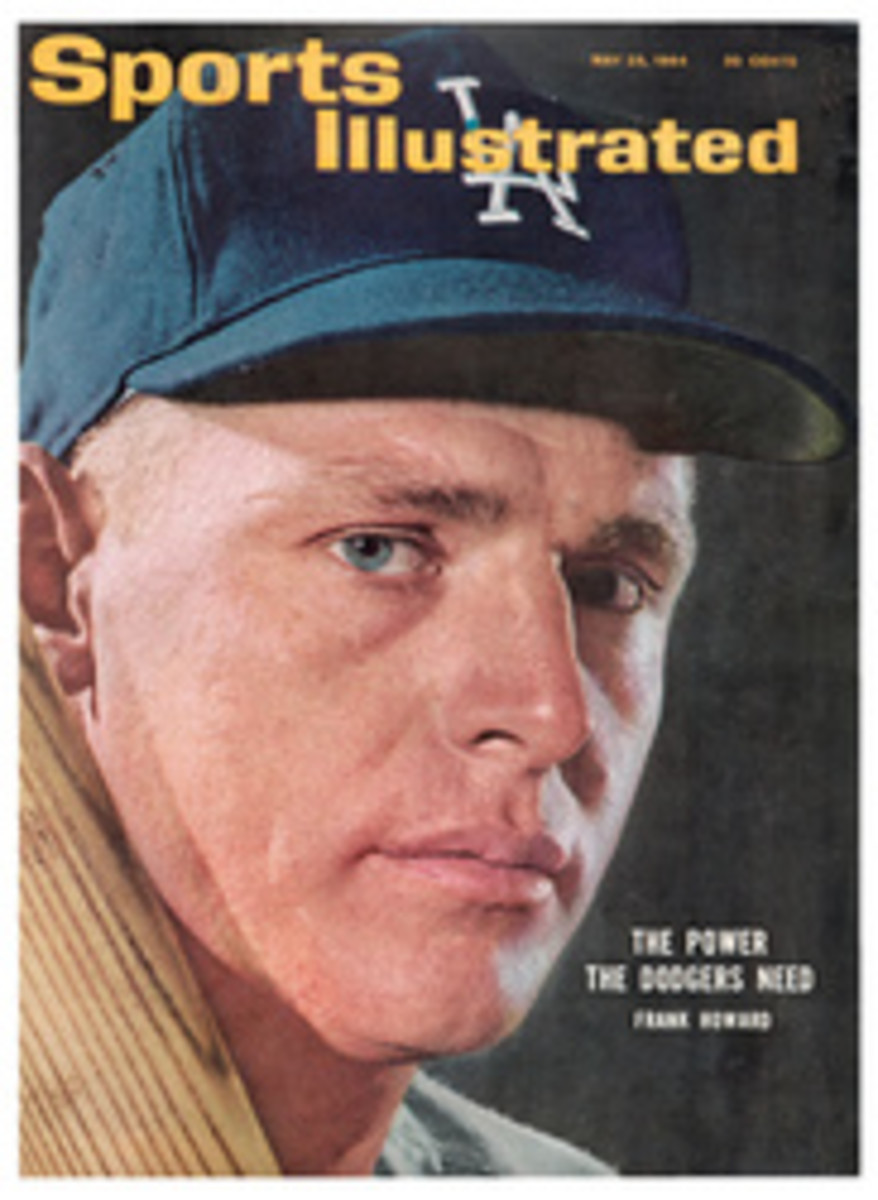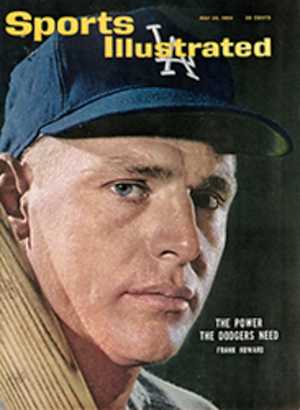
She Knocks Them into the Kitchen
Mae Hall, a trim, brown-haired, rosy-cheeked, blue-eyed woman in her early 50s, is known in the rather special world of competitive shuffleboard as the Babe Didrikson of the game. A particularly good shuffleboard play is often referred to as "a Mae Hall shot," and when Mae practices at the St. Petersburg Shuffleboard Club at Mirror Lake, large crowds swarm around to watch her play.
This season Mrs. Hall won eight of the 10 singles tournaments she entered and was runner-up in the other two. Included in her victories were the National Winter Singles, for the seventh time, the Full Moon Singles, the Masters and, for the sixth time, the Florida State title. She also took the Kow Kapital Women's Doubles, with Bess Henderson as her partner (Kissimmee, Fla. is the Kow Kapital), and finished fourth in the President's Trophy Mixed Doubles. Her husband Herbert, who makes the bamboo cues she uses, was her partner. Last year Mrs. Hall won the National Women's Doubles with Mrs. Henderson and finished third in the Fun 'n Sun Mixed Doubles with Herbert. (Clearwater, Fla. is the Fun 'n Sun city.)
In her 14-year career of serious shuffling, Mrs. Hall has won 46 singles tournaments out of 76 entered—more than anyone in the game—and has been runner-up 18 times. She has also been captain of the All-America Shuffleboard Team and has five times been Champion of Champions champion. She has finished at the top of the St. Petersburg Times "Roll of Champions"—a semiofficial ranking of Florida shufflers based on tournament records—for the past seven years. One year she tied for first with her archrival, Mrs. Mary Scalise.
The residents of St. Petersburg, the Sunshine City, take their shuffleboard seriously. It is the national game of Florida, and St. Petersburg, with more than 10,000 players and more than 200 courts, is the shuffleboard capital of the world. The St. Petersburg Shuffleboard Club is by far the world's largest, with 4,200 members and 107 courts. Ten of the top 11 lady players in Florida belong to the St. Petersburg club, and this year all four National Winter Singles titles—men's, women's, men's senior and women's senior—were won by residents of St. Petersburg.
Apart from social games, the city holds closed tournaments for persons 60 or older, nonwalking tournaments (for persons who don't like to walk from one end of the court to the other), tournaments for "experts" (the professionals of the game) and playoff tournaments, where the men's winner and the women's winner fight it out for the universal championship.
St. Petersburgers also are avid readers of shuffleboard news. Last year, when the St. Petersburg Times decided, for reasons of space, to cut down its shuffleboard coverage, 2,500 distraught shufflers petitioned for more lineage. The Times capitulated. There also are a shuffleboard annual in which fans can read about the year's triumphs and disasters and a book of instructions that contains shuffleboard problems.
Shuffleboard—once banned in New England in the 1840s because there was too much betting on it—is a somewhat less active sport than Indian leg wrestling, but at the tournament level it requires a sound sense of tactics, extreme accuracy in placing the disks and on occasion a good deal of explosive energy. The game, believe it or not, can be dangerous. "Board-cleaners," the Mickey Mantles of the sport, shoot so hard in clearing opponents' disks that the disks sometimes break into pieces and go hurtling all over the place. The leg of one scorekeeper was cracked by a board-cleaner's disk in a recent St. Petersburg tournament, and Mrs. Hall herself was once whacked in the ankle by a wild disk from a nearby court.
Tournament tempers are not always the most placid. In last month's Masters Tournament in St. Petersburg, one player got so incensed by a referee's call that he stormed to the tournament director's booth and swung at an official.
Block and hide
The game has its own esoteric vocabulary. A "block" is a disk placed on the court so that it interferes with a straight shot by one's opponent; a "hide" is a disk protected by a block. When a disk enters the 10-off area, it is said to be "in the kitchen." One of Mae Hall's specialties is knocking opponents' disks into the kitchen.
Like weekend golfers, shufflers do not hesitate to psych their opponents when the competition is close. Mrs. Hall, normally a calm player, gets upset when an opponent stands alongside and slowly jiggles her cue as Mae is about to shoot. Clearing the throat or slowly moving forward within the shooter's vision are other popular practices on the courts. Loud humming by an opponent is sure to distract Herbert Hall. "Men, however, are generally more considerate than women," says Mrs. Hall.
Herbert, who gets quite tense when his wife is in a tournament, once nearly cost Mae a championship. In the finals of the nationals four years ago in Daytona Beach, Mae was about to shoot when a terriffic clamor arose. On top of the clubhouse roof, trying to capture a runaway parakeet, perched Herbert. Brandishing a cage he happened to have with him (Herbert has a way with birds, and the Halls own a parakeet that talks to itself), he lured the bird inside as cheers and applause welled up from below. After Herbert had reached the ground, Mae relaxed and knocked two of her opponent's disks into the kitchen.
Successful start
The Halls started playing shuffleboard in 1946 while living in Colorado Springs, where they owned an apartment house. They were so intrigued by the geometry of the game that they stayed on the court for 10 straight hours the first time they played. Mae, who had never been interested in sports before, took some lessons from the local pro and, by constantly practicing such shots as the rolling block and the rolling kiss, rapidly became a first-rate player. She soon overtook Herbert, who had beat her at first, and in 1950 she became the Rocky Mountain singles champion by defeating Herbert in the finals 83-48, 81-4 (in shuffleboard 75 or more points is usually the winning score). Because of her knack for depositing opponents' disks into the 10-off space, Mae gave some competitors such a minus score while building up her own plus score that they quit and stormed off the court. "The men were worse sports than the women," Mae recalls.
Running out of western competition, the Halls moved to Miami in 1952, where Herbert went into real estate. Two years later Mae won her first national singles title. The Halls then moved to St. Petersburg, where they still reside. After another venture into real estate, Herbert retired from business. In 1960 he developed arthritis in his right arm and thought he would have to give up the game. But at Mae's urging he started to practice left-handed. For three months he shot most of his disks into the gutter. Finally his touch came back, and he reached the finals of the men's nationals, shooting southpaw.
Mae, who shoots with a firm wrist, a loose grip, a one-and-a-half-step approach and level shoulders at the point of release, believes her biggest victory came in 1962. After winning the Times-Mae Barber women's tournament, she competed against Webster Smith, the men's champion, in a playoff for 100 silver dollars. Smith led 72-53 in the final. Three points away from victory. Smith, in trying to protect one of his disks that was in the 7 space, shot one that scooted all the way down the court and landed helplessly in the kitchen, reducing his score by 10. Mrs. Hall promptly slid a disk through the clutter into the 8 space, making the score 62-61, Smith's favor. In the next half round, with Smith having the all-important last shot, Mae managed to get a 7 to Smith's 8. Then, in what turned out to be the final half round, Smith skillfully landed high in the 10 space. The crowd began to shout, "Put him in! Put him in!"—meaning into the kitchen.
As Herbert watched tensely on the sidelines, Mae carefully launched a shot directly at Smith's disk. Hers, bumping his, came to a stop in the 10 space while Smith's skidded down into the 10-off. That won the game for Mae, 78-60. It was the first time a woman had beaten a man in the Times-Mae Barber playoff.
Pressure player
Like any champion, Mae Hall produces her best shots under pressure. In last month's Masters she trailed in a critical match with Mary Scalise and was faced with a nearly impossible shot. "Mary had a 7 hid so I couldn't see it," she said recently. The Halls were in the living room of their cozy St. Petersburg home, which is filled with singles and doubles trophies. (About 50 more have spilled over into the garage.) "From past experience," Mae went on, "I knew the court had a drift that would make my disk curve after it slowed down. So I shot around the block, got rid of her 7 and took it into the kitchen."
"One of the best shots of the year," Herbert said. "The crowd went wild, and a lot of people waved Mae Hall dolls."
The Halls exchanged happy looks. Then Mae rose, seized her cue, handed Herbert his, and they buzzed off to the club for some practice.

